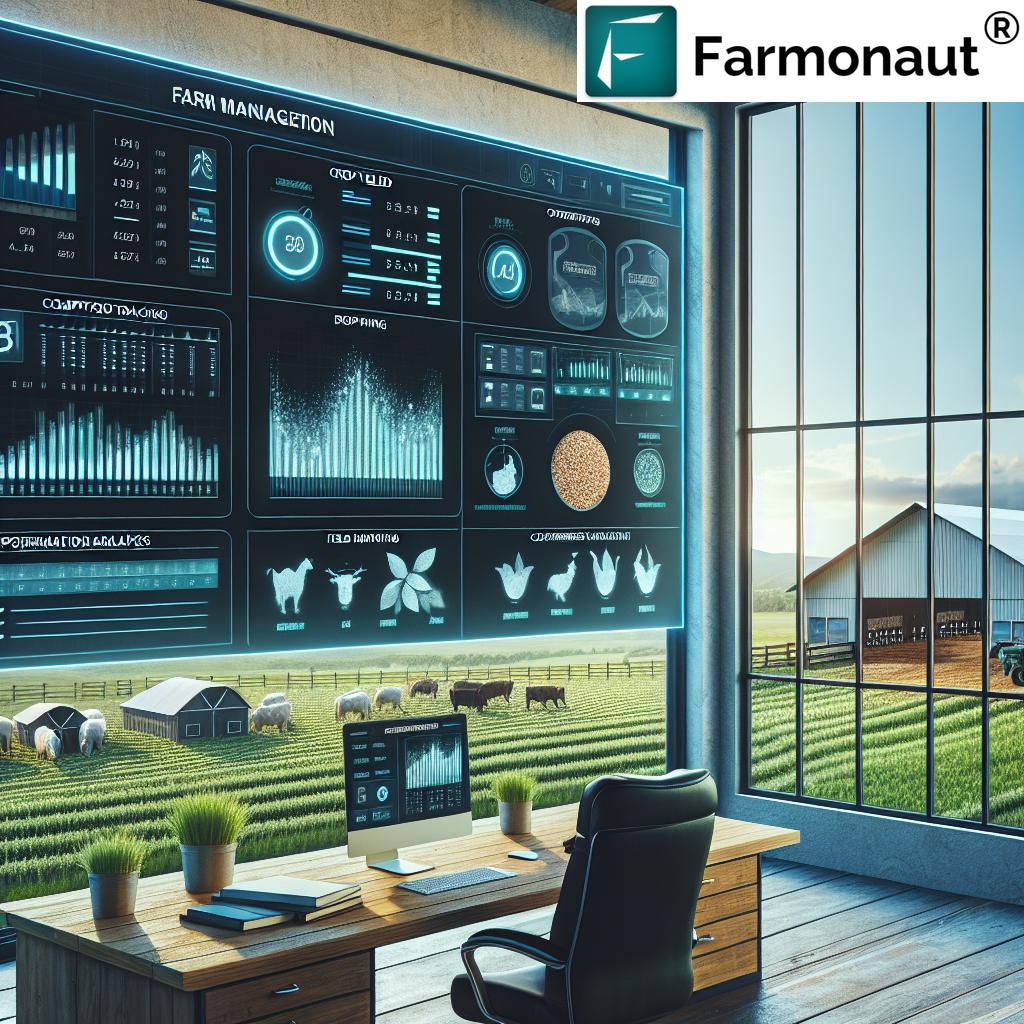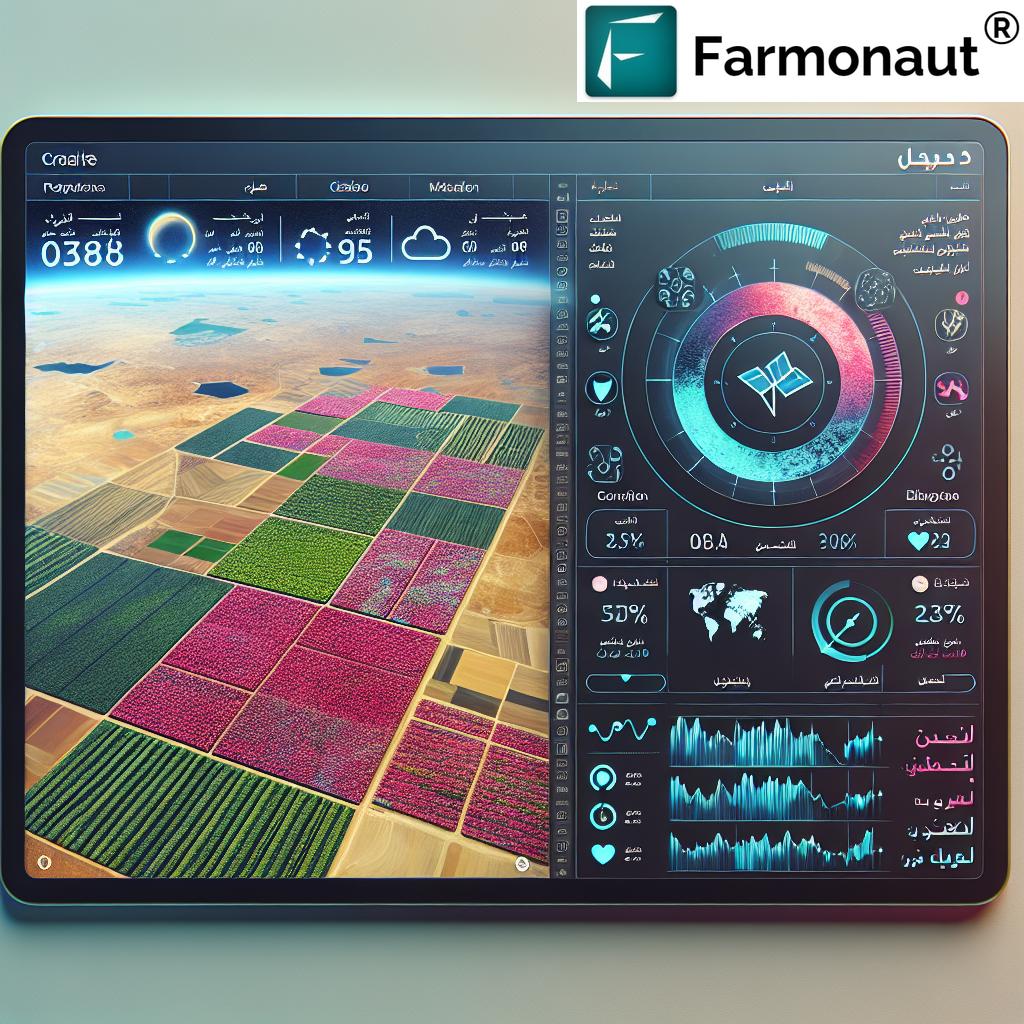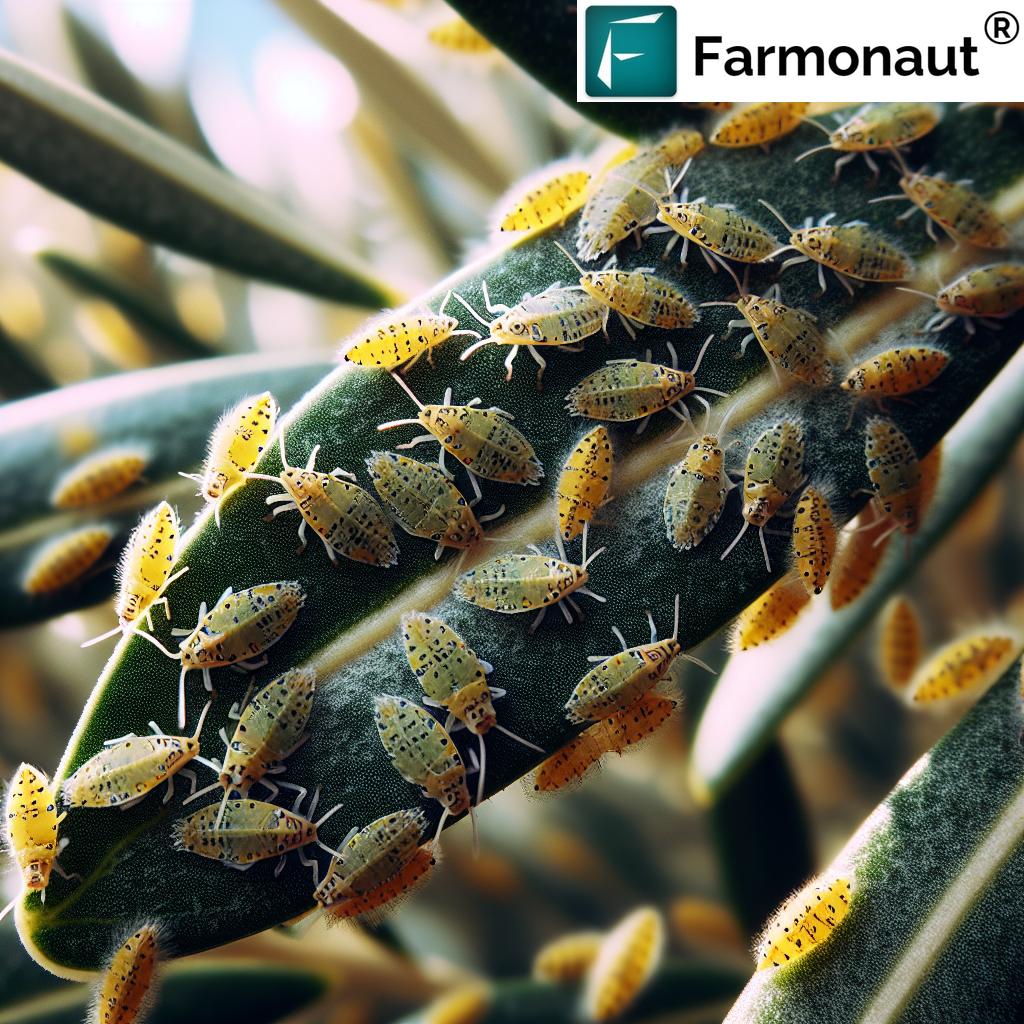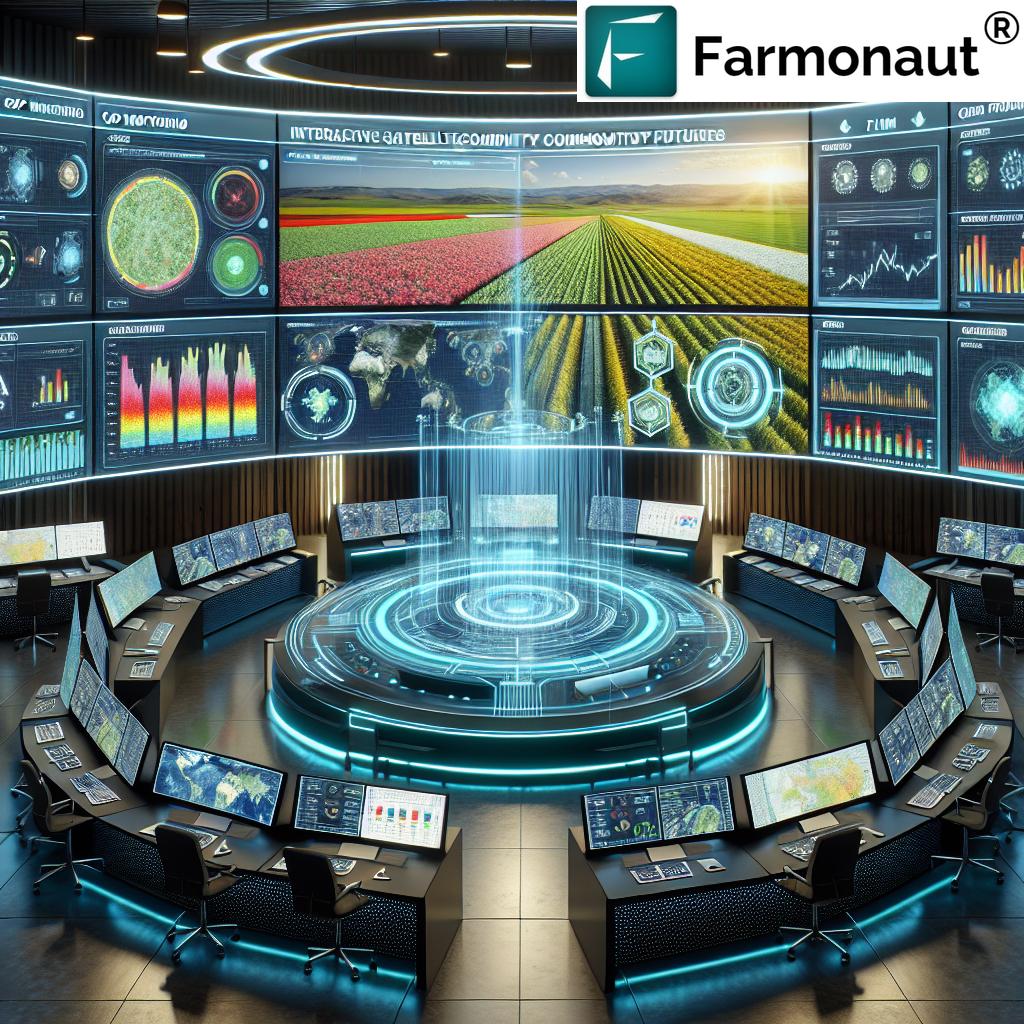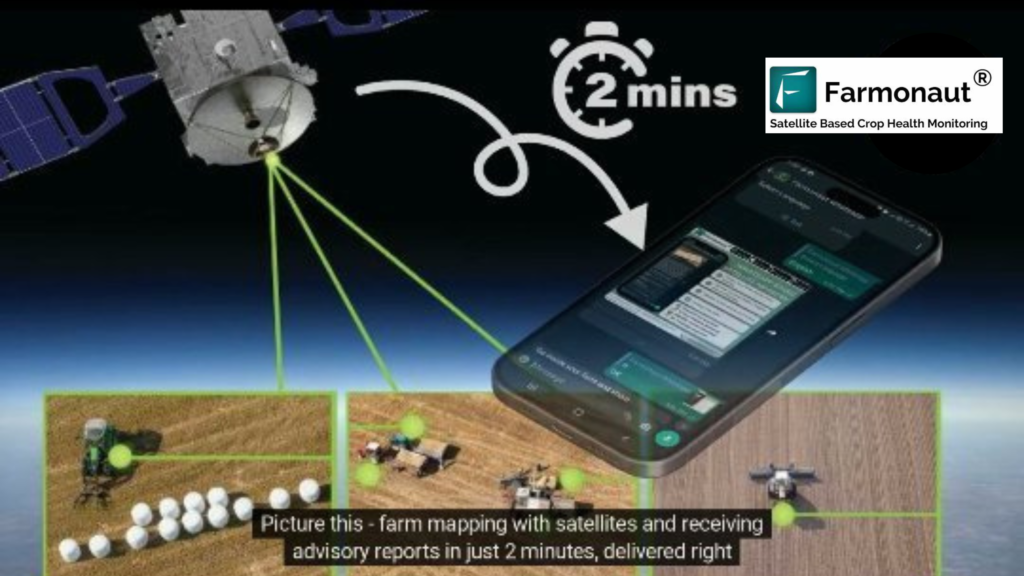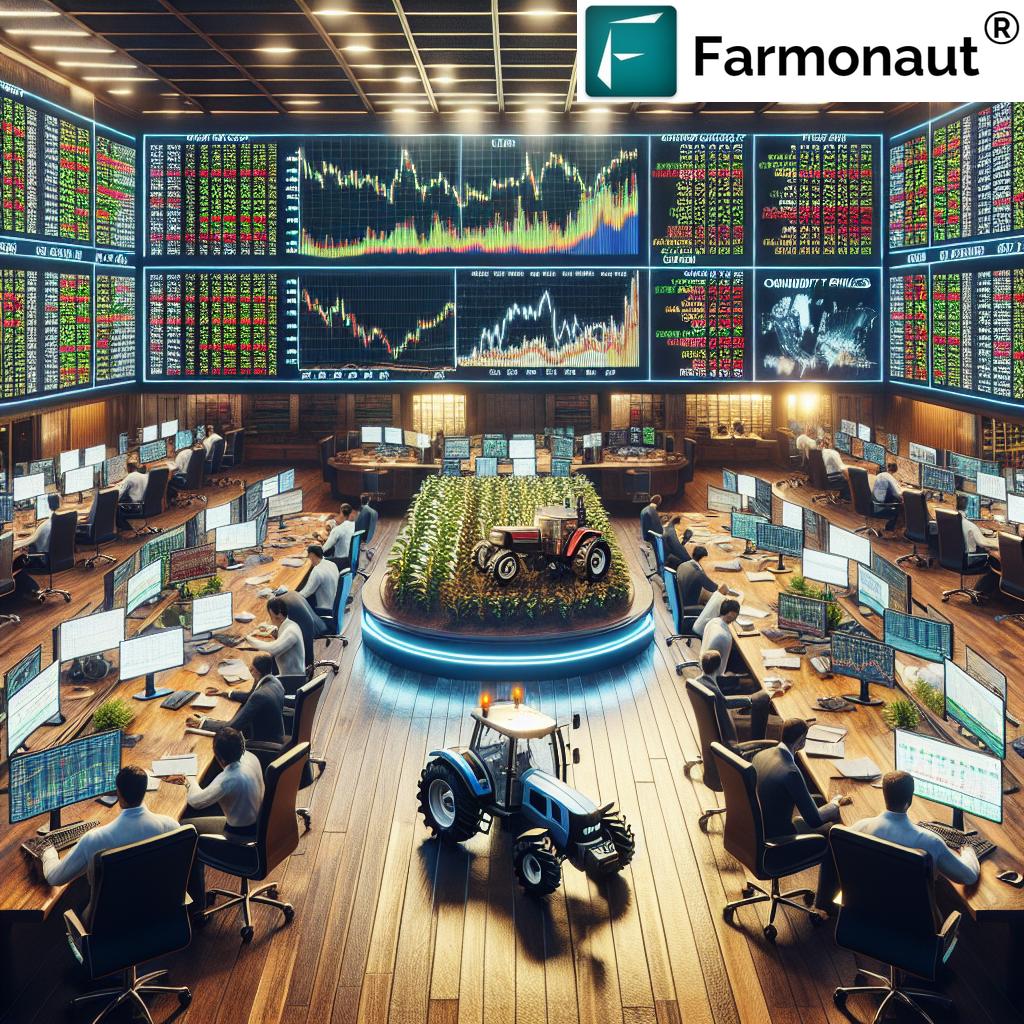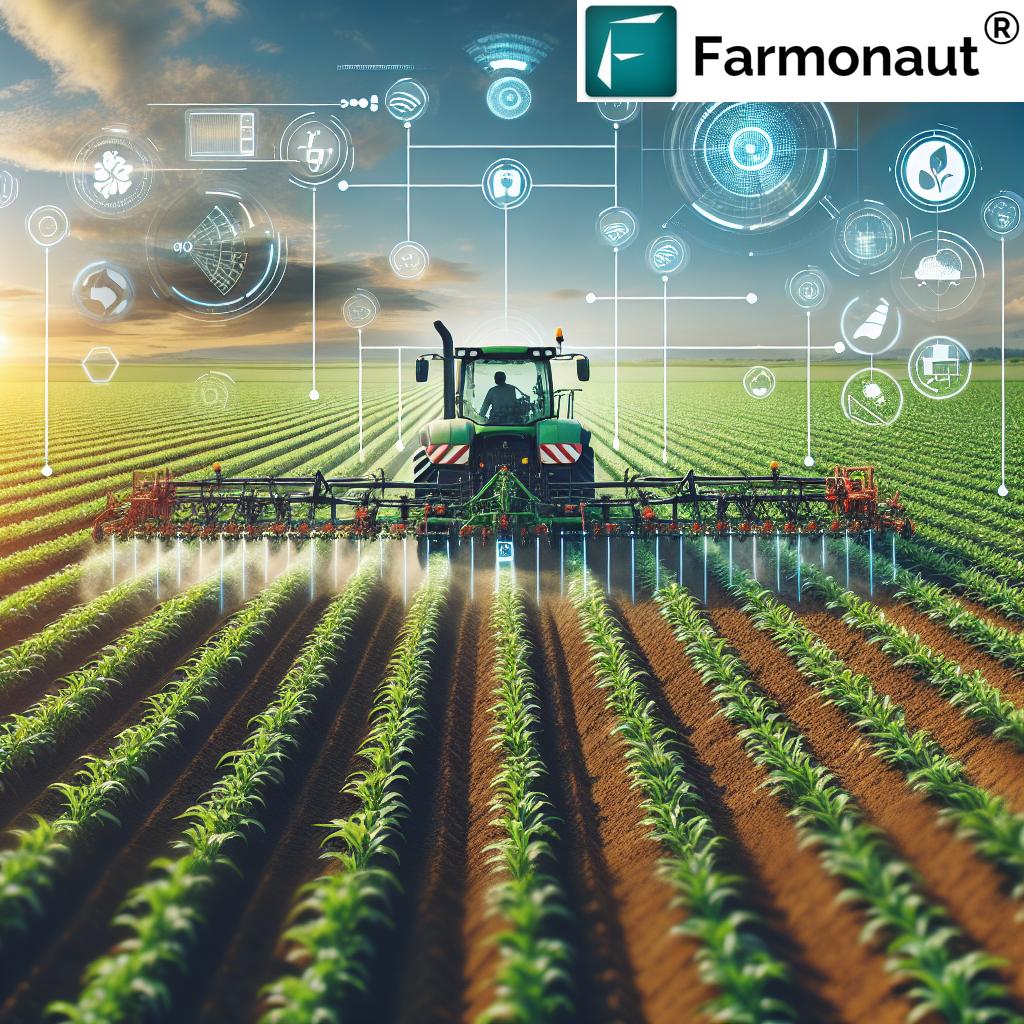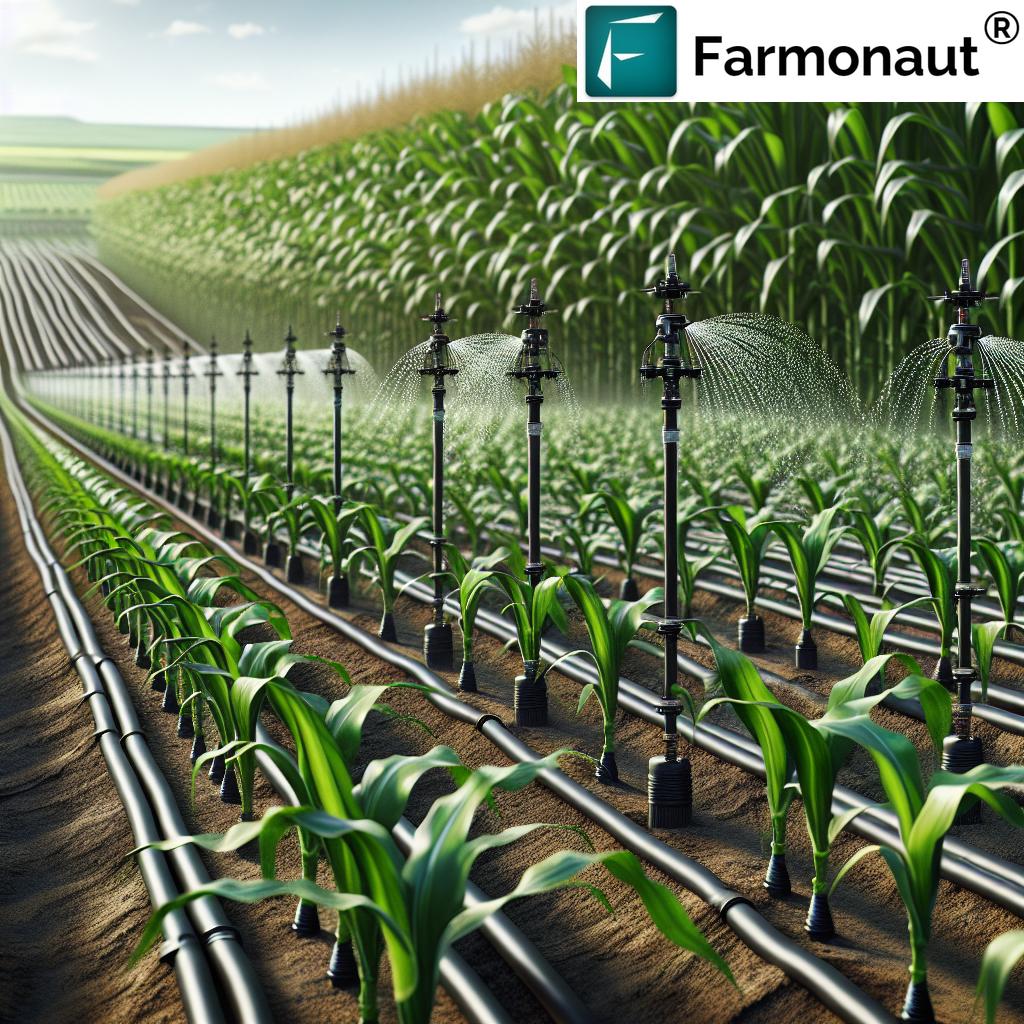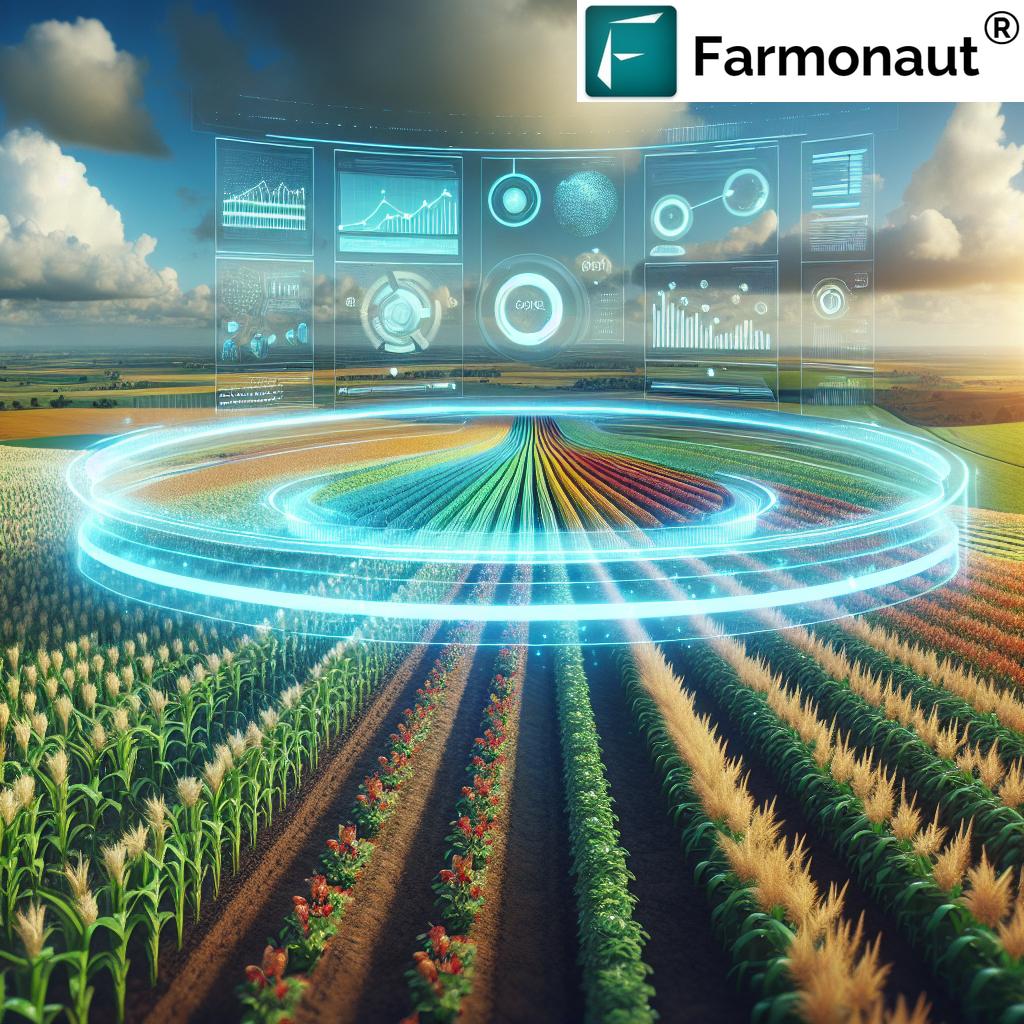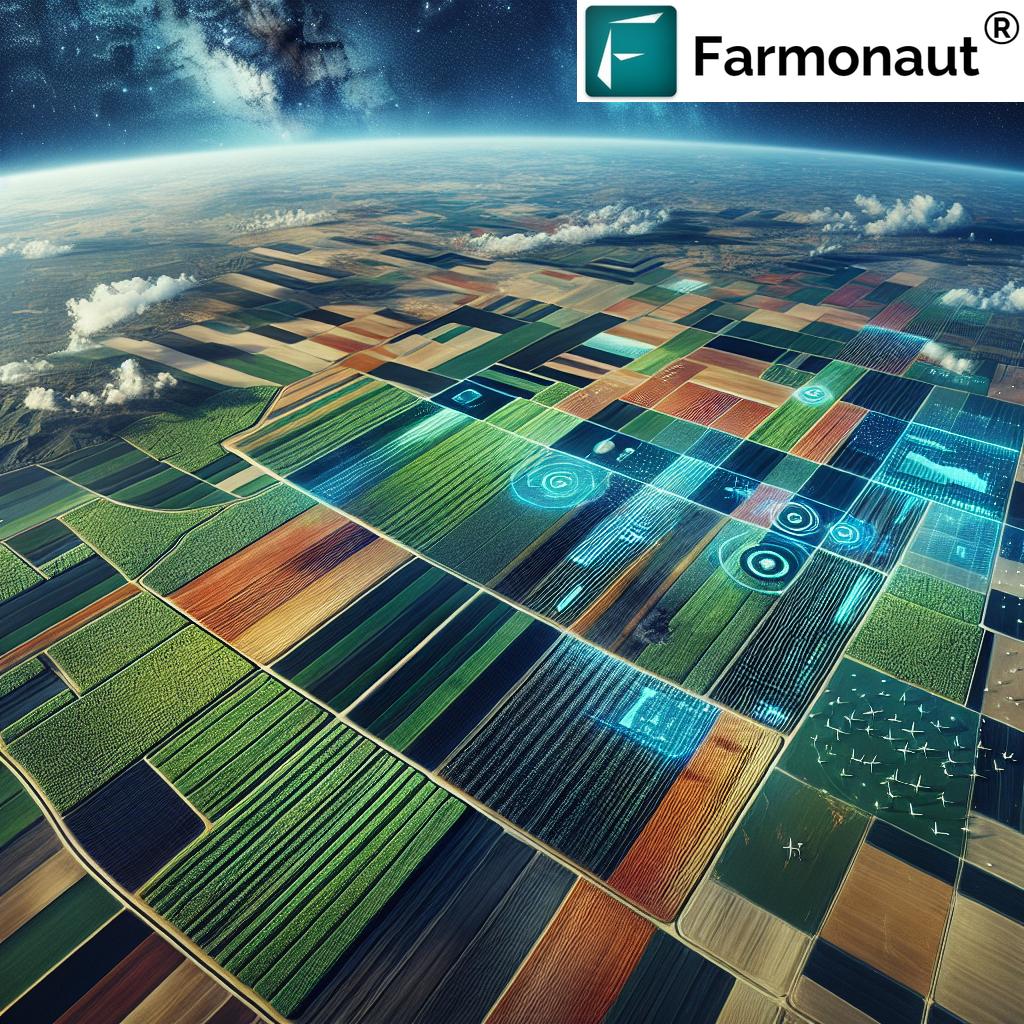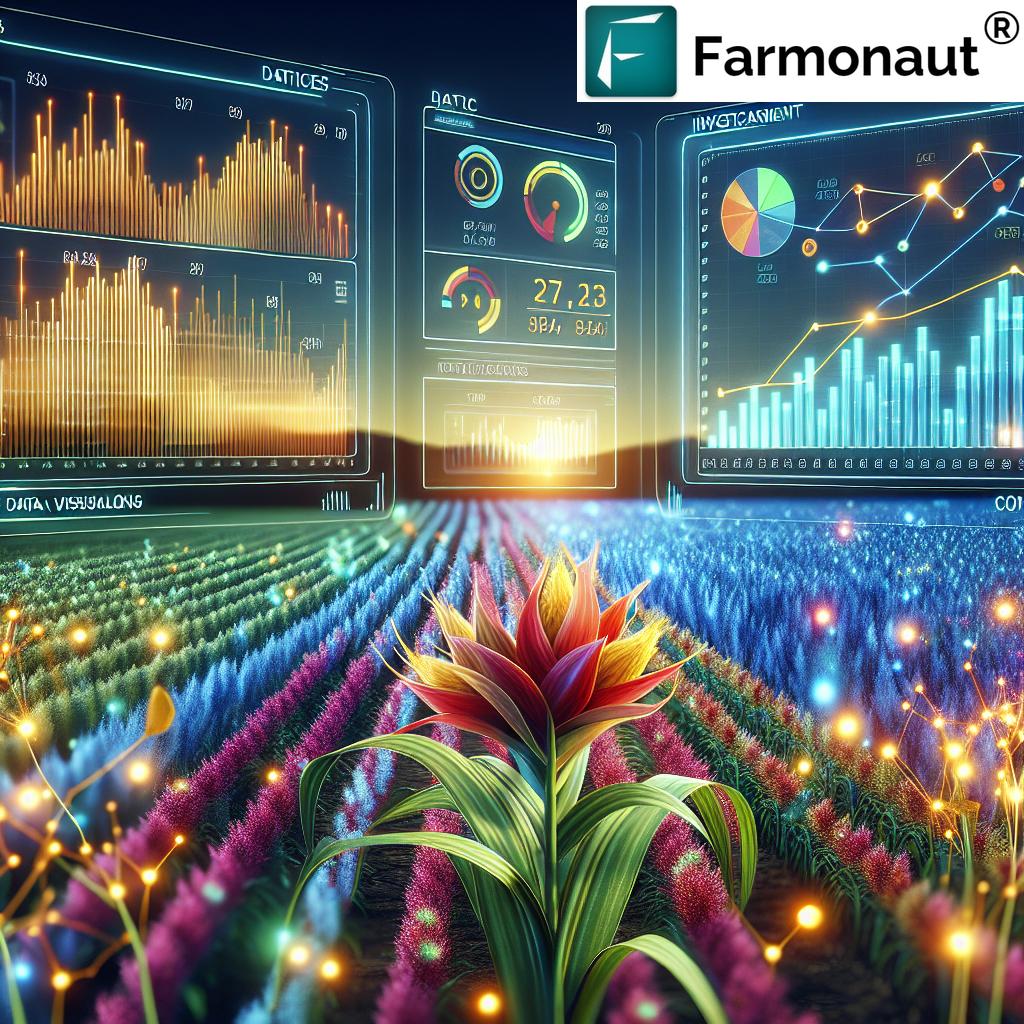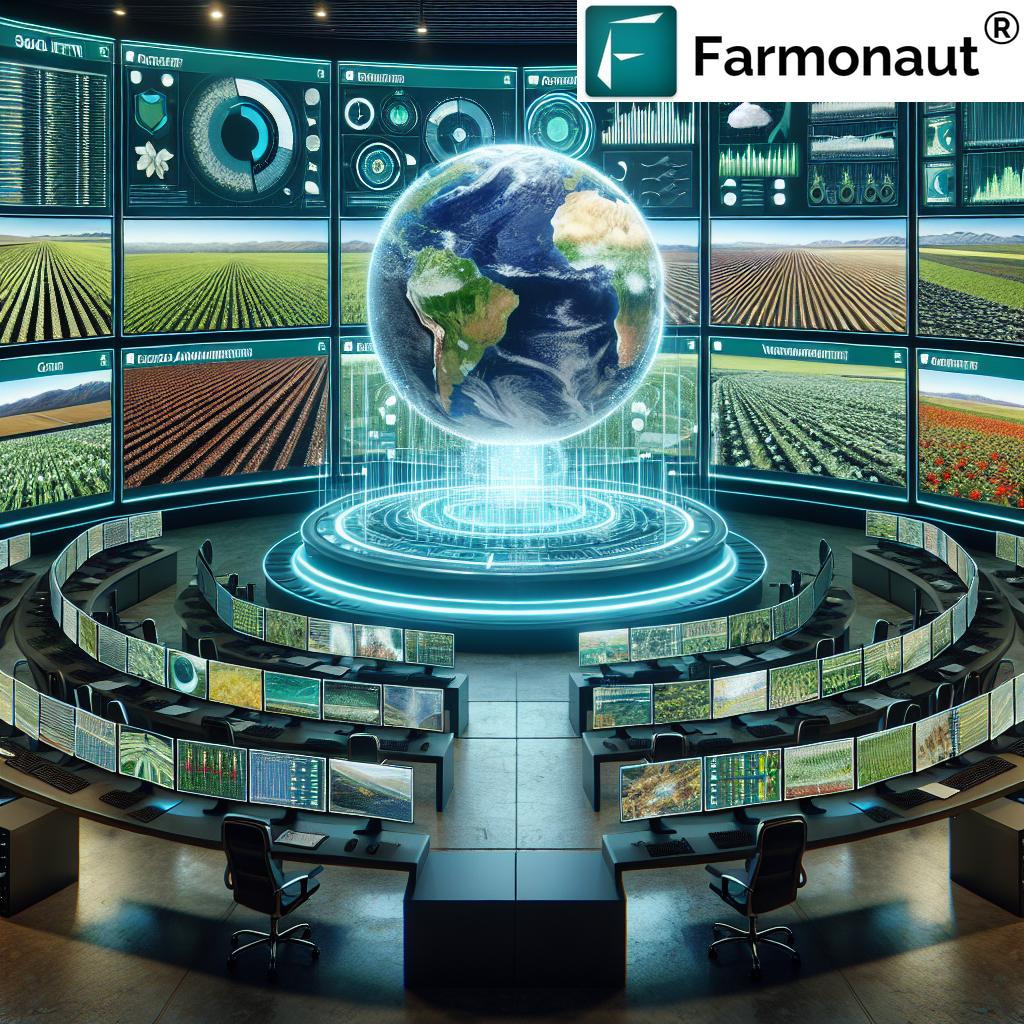Revolutionizing Agriculture: How AI and Satellite Monitoring Boost Crop Yields and Optimize Farming Practices
“AI-powered technologies can analyze over 1 million agricultural data points per day to predict harvest outcomes and optimize crop yields.”
In the ever-evolving world of agriculture, we are witnessing a remarkable transformation driven by cutting-edge technologies. Precision agriculture and smart farming are revolutionizing the way we approach crop yield optimization, ushering in a new era of efficiency and sustainability. At the forefront of this agricultural revolution are innovative agtech solutions that harness the power of artificial intelligence (AI), satellite crop monitoring, and advanced data analytics.
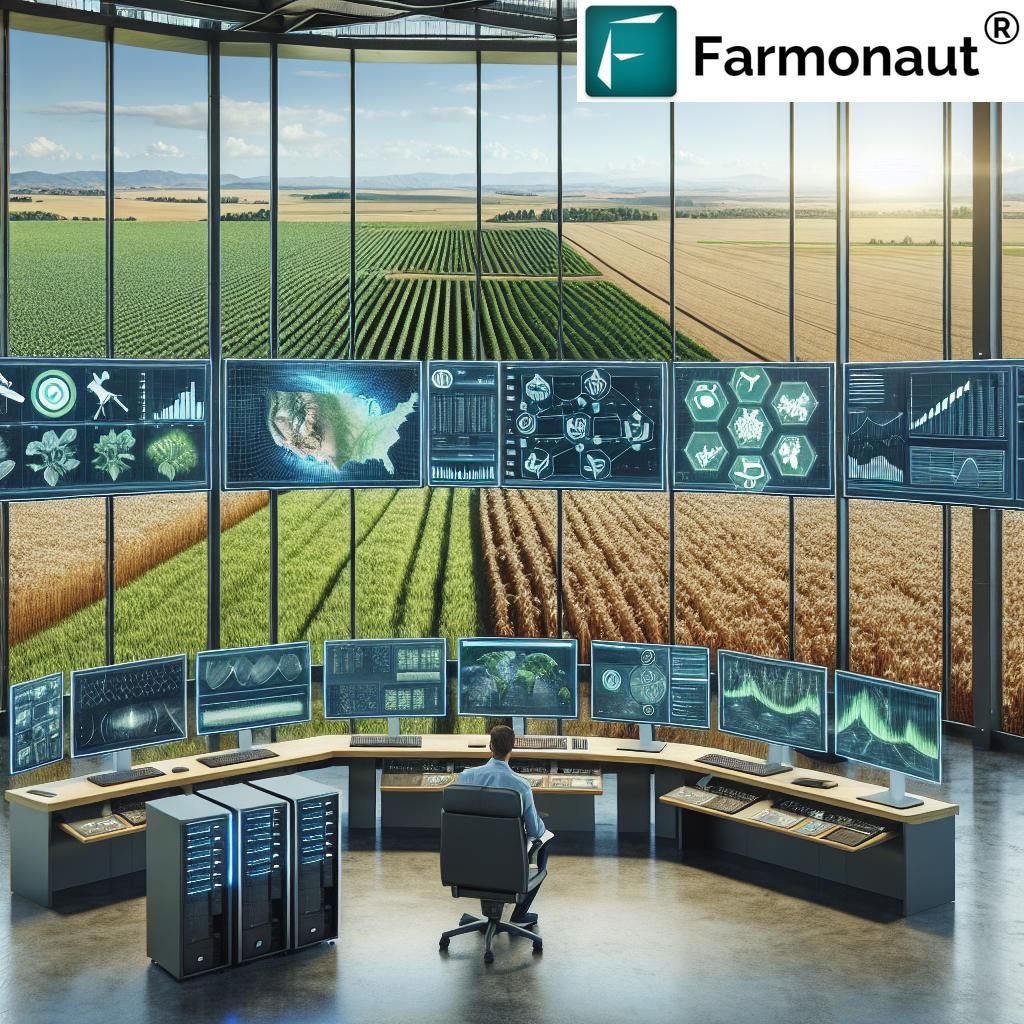
In this comprehensive blog post, we’ll explore how these groundbreaking technologies are transforming traditional farming practices, enabling farmers to make data-driven decisions, increase productivity, and embrace a new era of smart, sustainable agriculture. From soil moisture monitoring to plant stress detection, we’ll delve into the myriad ways that AI and satellite technology are reshaping the agricultural landscape.
The Rise of Precision Agriculture
Precision agriculture represents a paradigm shift in farming practices, leveraging advanced technologies to optimize every aspect of crop production. By utilizing satellite imagery, IoT sensors, and sophisticated data analysis, farmers can now make informed decisions based on real-time information about their fields.
- Satellite crop monitoring: High-resolution satellite imagery provides farmers with a bird’s-eye view of their fields, enabling them to identify areas of concern and track crop health over time.
- Soil moisture monitoring: Advanced sensors and satellite data allow for precise measurement of soil moisture levels, helping farmers optimize irrigation and prevent water waste.
- Plant stress detection: AI algorithms analyze multispectral imagery to detect early signs of plant stress, enabling proactive intervention to prevent crop losses.
These technologies work in concert to provide farmers with unprecedented insights into their fields, allowing for targeted interventions and optimized resource allocation.
AI in Agriculture: A Game-Changer for Crop Management
The integration of AI in agriculture has opened up new possibilities for crop management and yield optimization. Machine learning algorithms can process vast amounts of agricultural data, identifying patterns and making predictions that would be impossible for humans to discern manually.
Key applications of AI in agriculture include:
- Crop yield forecasting: AI models can predict harvest outcomes with remarkable accuracy, helping farmers and agribusinesses plan more effectively.
- Disease prediction: By analyzing historical data and current conditions, AI can forecast the likelihood of crop diseases, enabling preventive measures.
- Optimized fungicide application: AI-driven recommendations for fungicide application timing can significantly reduce chemical usage while maximizing effectiveness.
These AI-powered solutions are not just improving yields; they’re also contributing to more sustainable farming practices by reducing resource waste and minimizing environmental impact.
The Power of Satellite Crop Monitoring
“Satellite crop monitoring can detect plant stress and optimize fungicide application timing for wheat and corn with 95% accuracy.”
Satellite crop monitoring has emerged as a cornerstone of modern precision agriculture. By leveraging high-resolution imagery from satellites, farmers can gain valuable insights into their fields without the need for time-consuming and costly ground surveys.
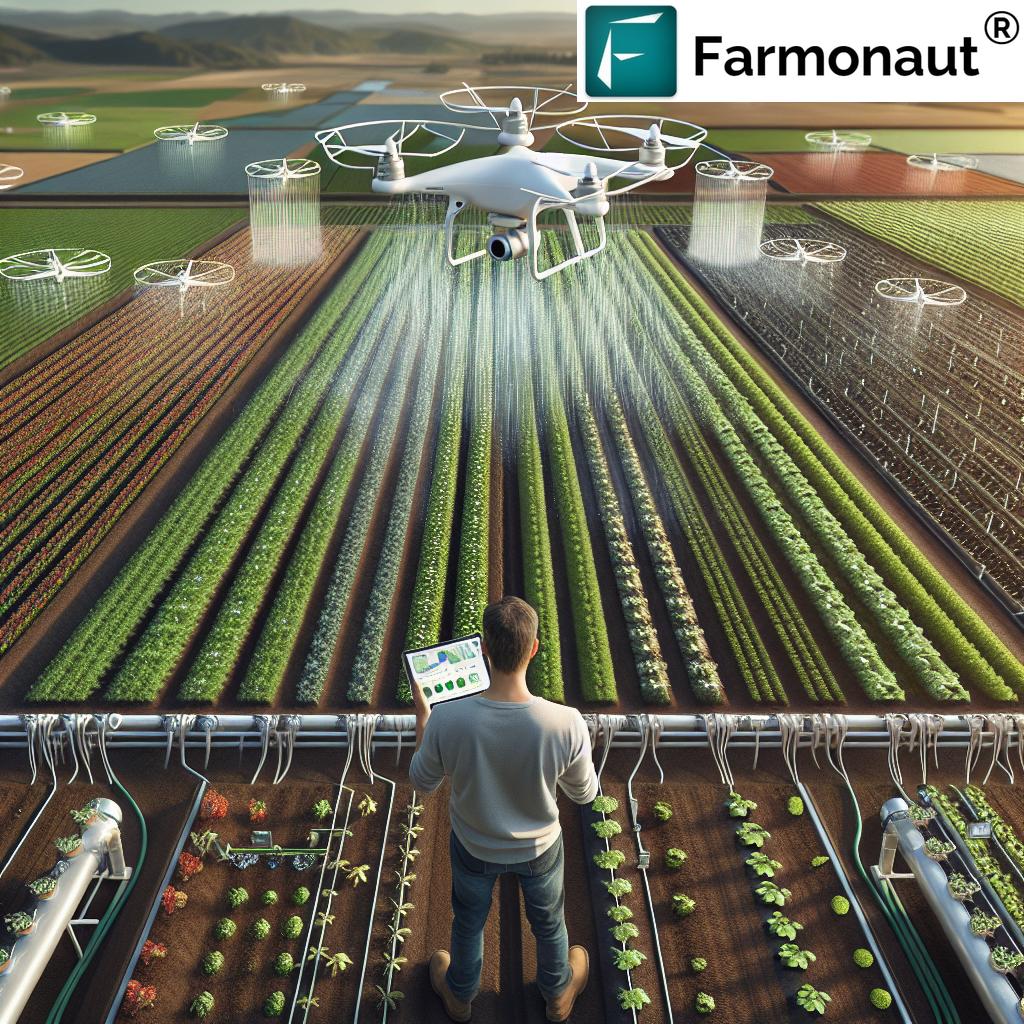
Benefits of satellite crop monitoring include:
- Large-scale coverage: Satellites can monitor vast areas of farmland, providing a comprehensive view of crop health across entire regions.
- Frequent updates: Regular satellite passes allow for continuous monitoring, enabling farmers to track changes in crop health over time.
- Multi-spectral analysis: Advanced sensors can detect subtle variations in plant health that are invisible to the naked eye, providing early warning of potential issues.
By harnessing the power of satellite technology, farmers can make more informed decisions about irrigation, fertilization, and pest management, leading to improved yields and reduced environmental impact.
GIS in Agriculture: Mapping the Future of Farming
Geographic Information Systems (GIS) play a crucial role in modern agriculture, enabling farmers and agronomists to analyze spatial data and make informed decisions about land use optimization and resource management.
Key applications of GIS in agriculture include:
- Precision farming: GIS enables the creation of detailed field maps, allowing for variable-rate application of inputs based on soil conditions and crop needs.
- Yield mapping: By analyzing yield data in a spatial context, farmers can identify areas of high and low productivity within their fields.
- Irrigation management: GIS helps optimize irrigation systems by considering topography, soil types, and crop water requirements.
The integration of GIS with other precision agriculture technologies creates a powerful toolkit for modern farmers, enabling them to maximize productivity while minimizing environmental impact.
Machine Learning for Farming: Predictive Analytics and Beyond
Machine learning for farming is revolutionizing agricultural decision-making by providing predictive insights and automating complex analysis tasks. These algorithms can process vast amounts of data from multiple sources, including satellite imagery, weather stations, and soil sensors, to generate actionable recommendations for farmers.
Applications of machine learning in agriculture include:
- Crop yield prediction: ML models can forecast yields with increasing accuracy, helping farmers and agribusinesses plan for harvest and market conditions.
- Pest and disease detection: By analyzing patterns in historical data and current conditions, ML algorithms can predict and detect the onset of crop diseases and pest infestations.
- Optimal planting schedules: Machine learning can determine the best planting times based on weather patterns, soil conditions, and crop varieties.
As machine learning algorithms continue to evolve and improve, their potential to transform agriculture grows, promising even greater efficiencies and sustainability in the future.
Sustainable Farming Practices: The Role of Technology
Sustainable farming practices are becoming increasingly important as we face the challenges of climate change and resource scarcity. Advanced technologies play a crucial role in enabling farmers to adopt more environmentally friendly approaches without sacrificing productivity.
Key technologies supporting sustainable agriculture include:
- Precision irrigation systems: AI-powered irrigation management reduces water waste by delivering precise amounts of water based on crop needs and soil moisture levels.
- Variable-rate fertilizer application: By applying fertilizers only where and when they’re needed, farmers can reduce chemical runoff and improve soil health.
- Integrated pest management: AI and satellite monitoring help farmers implement more targeted pest control strategies, reducing reliance on chemical pesticides.
These technologies not only contribute to environmental sustainability but also help farmers reduce input costs and improve long-term soil health.
Farmonaut: Pioneering Agtech Solutions
At the forefront of this agricultural revolution is Farmonaut, a pioneering agricultural technology company offering advanced, satellite-based farm management solutions. Farmonaut’s mission is to make precision agriculture affordable and accessible to farmers worldwide by integrating innovative technology and data-driven insights into traditional farming practices.
Farmonaut’s platform provides valuable services such as:
- Real-time crop health monitoring
- AI-based advisory systems
- Blockchain-based traceability
- Resource management tools
By leveraging cutting-edge technologies like satellite imagery, artificial intelligence, and machine learning, Farmonaut empowers farmers to make informed decisions, optimize their operations, and embrace sustainable farming practices.
The Future of Digital Agriculture
As we look to the future, the potential for digital agriculture to transform farming practices is immense. Emerging technologies such as edge computing, 5G networks, and advanced robotics promise to further enhance the capabilities of precision agriculture systems.
Some exciting developments on the horizon include:
- Autonomous farming equipment: Self-driving tractors and harvesters guided by AI and satellite navigation.
- Advanced crop breeding: AI-assisted genetic analysis to develop more resilient and productive crop varieties.
- Blockchain for supply chain transparency: Improved traceability from farm to table, enhancing food safety and consumer trust.
These innovations will continue to drive efficiency, sustainability, and productivity in agriculture, helping to meet the growing global demand for food while minimizing environmental impact.
Comparison: Traditional Farming vs. Farmonaut Satellite System
| Aspect | Traditional Farming | Farmonaut Satellite System |
|---|---|---|
| Crop Yield Optimization | 5-10% increase | 20-30% increase |
| Plant Stress Detection | Visual inspection, often delayed | Early detection via satellite imagery |
| Fungicide Application Timing | Based on calendar or visual cues | AI-optimized timing, reducing waste |
| Irrigation Management | Scheduled or manual assessment | Precision management based on real-time data |
| Soil Moisture Monitoring | Periodic manual checks | Continuous satellite-based monitoring |
| Crop Health Tracking | Intermittent field visits | Daily updates via satellite imagery |
| Yield Forecasting Accuracy | 60-70% | 85-95% |
| Decision-Making Process | Experience-based, reactive | Data-driven, proactive |
| Sustainability Impact | Variable, often resource-intensive | Optimized resource use, reduced environmental impact |
| Resource Efficiency | Generalized application of inputs | Targeted, variable-rate application |
Leveraging Farmonaut’s API for Agricultural Innovation
For developers and businesses looking to integrate advanced agricultural data into their own systems, Farmonaut offers a powerful API. This API provides access to Farmonaut’s comprehensive satellite and weather data, enabling the creation of custom applications and services for the agricultural sector.
Key features of Farmonaut’s API include:
- Access to high-resolution satellite imagery
- Real-time weather data and forecasts
- Crop health indices and vegetation analysis
- Soil moisture estimates
Developers can find detailed information on how to integrate and utilize Farmonaut’s API in the API Developer Docs.
Farmonaut Mobile Apps: Precision Agriculture in Your Pocket
To make precision agriculture accessible anytime, anywhere, Farmonaut offers mobile applications for both Android and iOS devices. These apps bring the power of satellite monitoring and AI-driven insights directly to farmers’ smartphones, enabling on-the-go decision-making and field management.
Download Farmonaut’s mobile apps:
Farmonaut Subscriptions: Tailored Solutions for Every Farm
Farmonaut offers flexible subscription plans to cater to the diverse needs of farmers and agribusinesses. Whether you’re managing a small family farm or overseeing large-scale agricultural operations, there’s a Farmonaut plan designed to help you optimize your farming practices and boost productivity.
Frequently Asked Questions
Q: How does AI improve crop yield optimization?
A: AI analyzes vast amounts of data from various sources, including satellite imagery, weather patterns, and soil sensors, to provide precise recommendations for planting, irrigation, and harvesting. This data-driven approach can lead to significant increases in crop yields.
Q: What are the benefits of satellite crop monitoring?
A: Satellite crop monitoring offers large-scale coverage, frequent updates, and multi-spectral analysis capabilities. This allows farmers to detect plant stress early, optimize resource allocation, and make informed decisions about crop management.
Q: How does Farmonaut’s technology contribute to sustainable farming?
A: Farmonaut’s platform enables precision agriculture practices that optimize resource use, reduce waste, and minimize environmental impact. This includes precise irrigation management, targeted fertilizer application, and early pest detection, all of which contribute to more sustainable farming practices.
Q: Can small-scale farmers benefit from Farmonaut’s solutions?
A: Yes, Farmonaut is designed to be accessible and affordable for farmers of all scales. The platform offers flexible pricing tiers and mobile apps that make precision agriculture tools available to small-scale farmers, helping them improve productivity and profitability.
Q: How accurate are AI-powered yield prediction models?
A: AI-powered yield prediction models can achieve accuracy rates of 85-95%, significantly outperforming traditional forecasting methods. These models consider a wide range of factors, including historical data, current field conditions, and weather forecasts, to provide highly accurate yield estimates.
Conclusion
The integration of AI, satellite monitoring, and advanced data analytics in agriculture represents a transformative shift in how we approach farming. These technologies are not just improving yields and reducing costs; they’re paving the way for a more sustainable and resilient agricultural sector capable of meeting the challenges of the 21st century.
As we’ve explored in this blog post, companies like Farmonaut are at the forefront of this agricultural revolution, providing farmers with the tools and insights they need to optimize their operations and embrace precision agriculture. By making these advanced technologies accessible and affordable, Farmonaut is helping to democratize smart farming practices, ensuring that farmers of all scales can benefit from the latest innovations in agtech.
The future of farming is data-driven, sustainable, and increasingly automated. As these technologies continue to evolve and improve, we can look forward to a world where agriculture is more productive, more environmentally friendly, and better equipped to feed a growing global population. The revolution in agriculture is well underway, and the possibilities are truly exciting.





